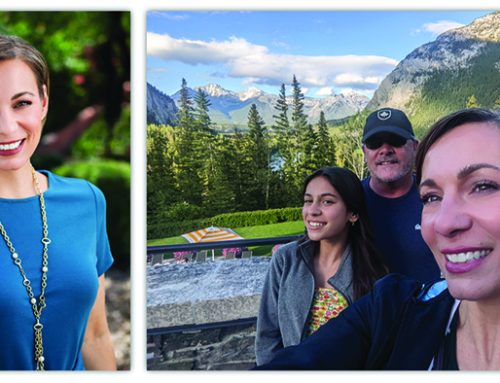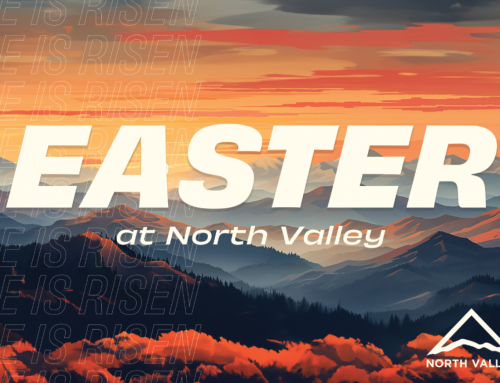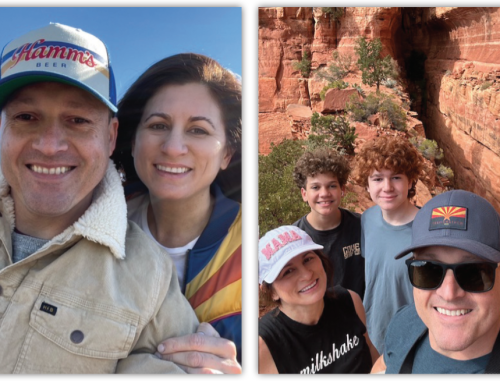By Stacey Lane
 Off Interstate 17, peeks a sleepy western town, surrounded by cacti and wildflowers, called Black Canyon City. Beyond the glow of the city lights, nestled in the foothills of the Bradshaw Mountains in the Sonoran Desert’s Black Canyon region, a small city with rugged and majestic scenery captures the spirit of the Wild West. With an approximate population of 3,000 people, Black Canyon City’s step back in time is just 45 minutes north of Phoenix, encompasses 10 square miles and is home to many gems.
Off Interstate 17, peeks a sleepy western town, surrounded by cacti and wildflowers, called Black Canyon City. Beyond the glow of the city lights, nestled in the foothills of the Bradshaw Mountains in the Sonoran Desert’s Black Canyon region, a small city with rugged and majestic scenery captures the spirit of the Wild West. With an approximate population of 3,000 people, Black Canyon City’s step back in time is just 45 minutes north of Phoenix, encompasses 10 square miles and is home to many gems.The Black Canyon, named after the color of the basalt in the surrounding rock, is filled with surprises and one might say, a real gold mine. Many a modern day prospectors still find gold here today. At approximately 2,000 feet above sea level, winters are ideal while the summers warm up, but cool off when the colorful sunsets come out to play.
In the late 1800’s, miners carried their pioneering spirit to this lush part of the Agua Fria River, along with soldiers, herders, ranchers and adventurers. Originally known as Canon, its name has changed a few times over the last hundred years as its history took shape. In its early days, it was also called Canon and simply Black Canyon. The word “City” was added in 1965 and Black Canyon City remains its official name. Interestingly enough, it is not officially designated as a city or a town, which is a testament to the fact that folks in Black Canyon have a hankering for doing things in a unique fashion.
Gold is considered a main reason for the community’s existence. Black Canyon became a mining hamlet around 1857 when placer gold was found in the Black Canyon and Agua Fria Rivers. Amongst the colorful characters that have been drawn to Black Canyon City was a clever miner, rancher, entrepreneur and hell-raiser from the 19th century named Jack Swilling. He came to Arizona from South Carolina during the Civil War. During his trips as a courier, he encountered the abandoned canals and irrigation ditches left behind by the Hohokam along the Salt River and founded the Swilling Irrigation Canal Company. In 1867, his company began to clear the ditches, and this in effect, began the founding of Phoenix. He eventually sold his interest, and began a mining career in the Bradshaw Mountains in 1873. The ranch he established is today’s Black Canyon City.
Black Canyon City is a link to Arizona’s not so distant past . One can step back in time with The Black Canyon Trail. It first served as a corridor for early Native Americans and later became an official stagecoach stop in 1871, credited to Jack Swilling and Daryl Duppa, for weary travelers on the Phoenix to Prescott line. In 2008, the trail was designated a National Recreation Trail and today is used for hiking, biking and horseback riding. Its multiple trailheads and long, winding run hold backcountry beauty at every bend, stretching 80 miles north from Carefree Highway to Mayer.
The town is as humble and unique, and its residents find themselves here for many a reason. Jack Ekin is one. “I believe it was in 1979 and on our way up north, we found a freeway bridge just north of exit 242 and we had to detour through the town of Black Canyon City. My wife, Jan, and I stopped at the Midway Saloon, then located in the center of town because they were having a donkey BBQ! Never in a million years did we think we would imbed in this little town,” Jack recalled with a smile. He later took full ownership of the Squaw Peak Steak House, sold it and it is now known as Chilleen’s on 17.
Looking for serenity and stargazing, just add Black Canyon. Resident Diana Kenson moved out of the hustle and hurry of Phoenix in 2004. She enjoys remaining with the simple things that life in Black Canyon City brings. “I stay here for the clean air and with the lack of bright street lights, I am able to actually see stars at night and hear the quiet sounds that nature offers. I hear coyotes calling their kits at night and have the option of taking photos of the javelinas and foxes that roam in my back yard. I love Black Canyon City, the nature, the picturesque beautiful mountain scenery and all with the convenience of having a local grocery store located only three-quarters of a mile away.”
This outdoor showcase for wildflowers and wildlife continues to grow. One of the newest additions to Black Canyon City is Heritage Park, which consists of mini-streams and a restful pond located on 33 acres. The park grounds and its peaceful surroundings beckon visitors to get lost in the blue of a lazy afternoon. It also provides a natural site for the relocated 1926 original schoolhouse, which will soon be home to the Black Canyon Historical Museum.
The next time your wheels are on I-17, cowboy up and pan for some gold. The disputed mine claims, family feuds and wildflower lined trails in the Black Canyon have created some of the enduring legends of the Old West that are still alive and well today.
To learn more visit www.blackcanyonaz.com





